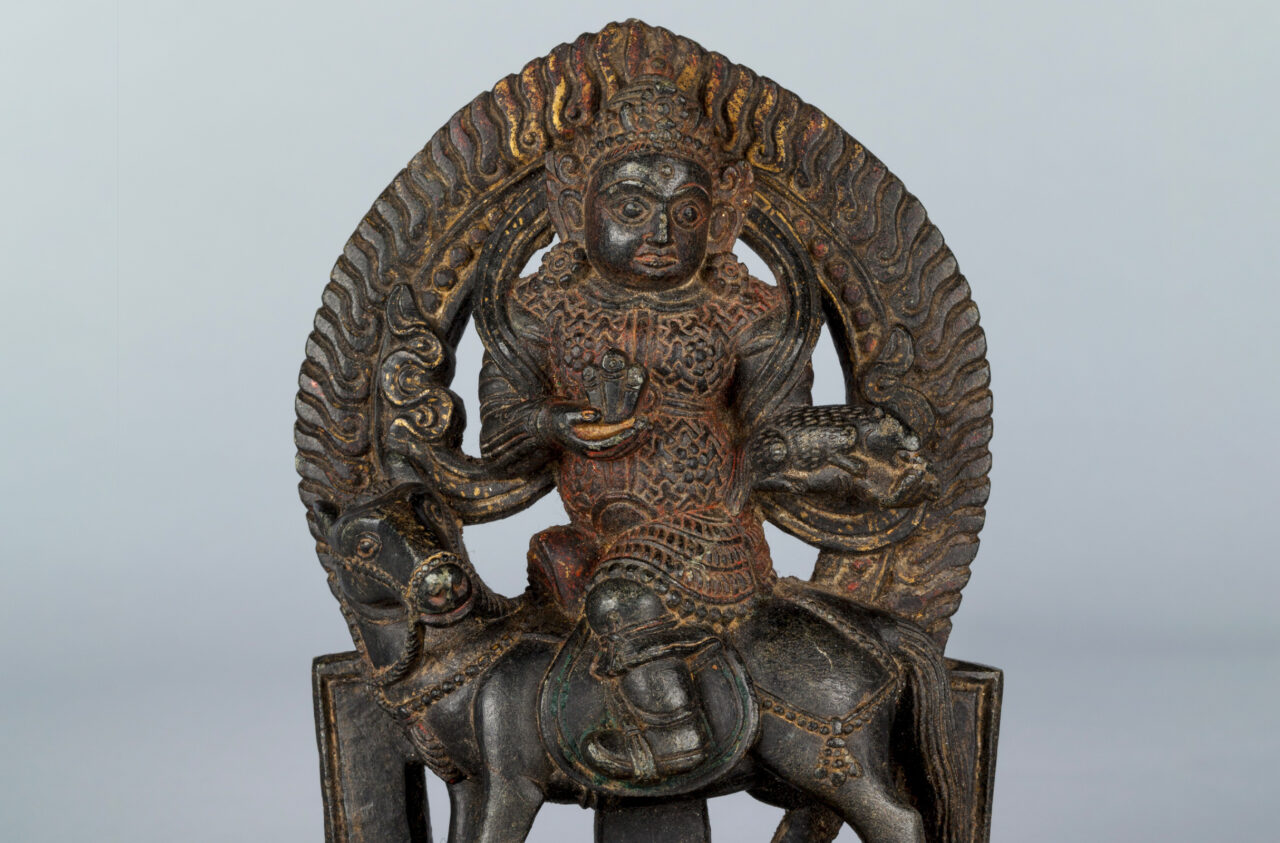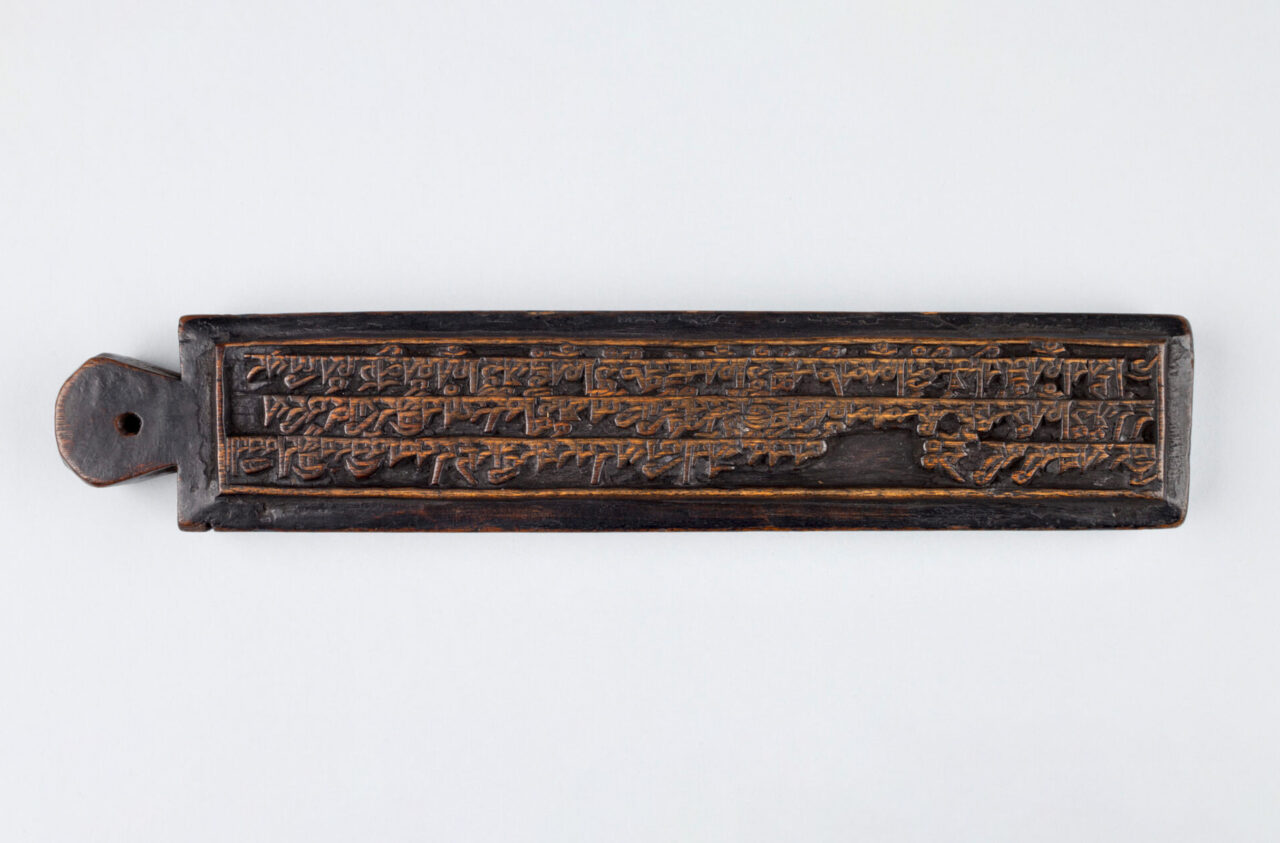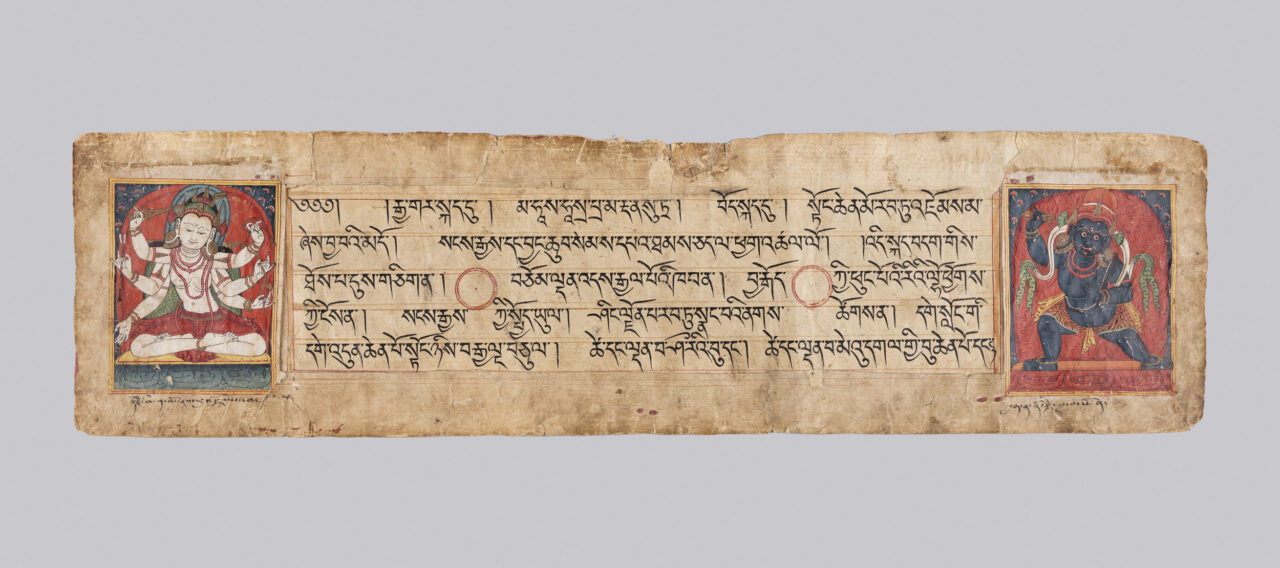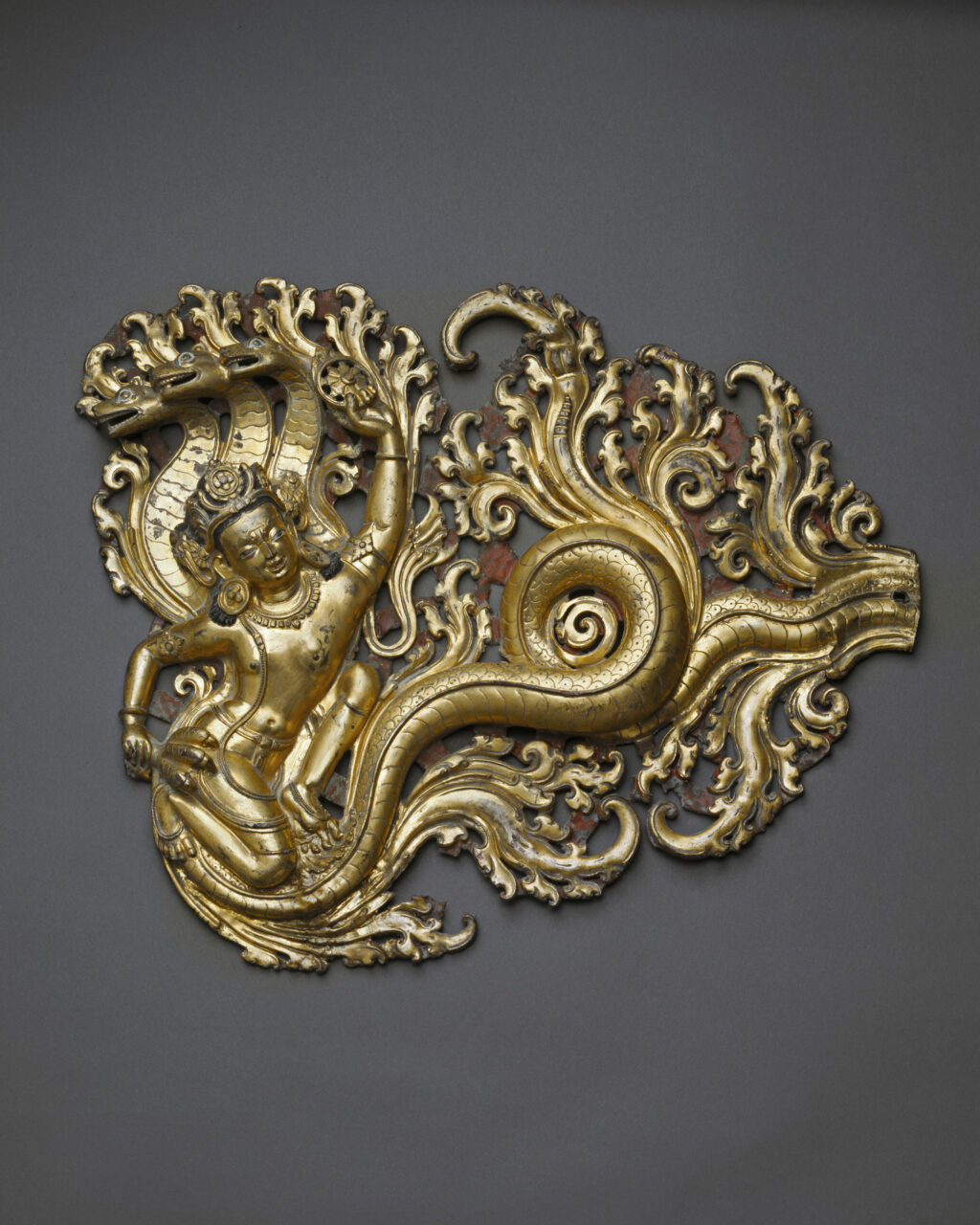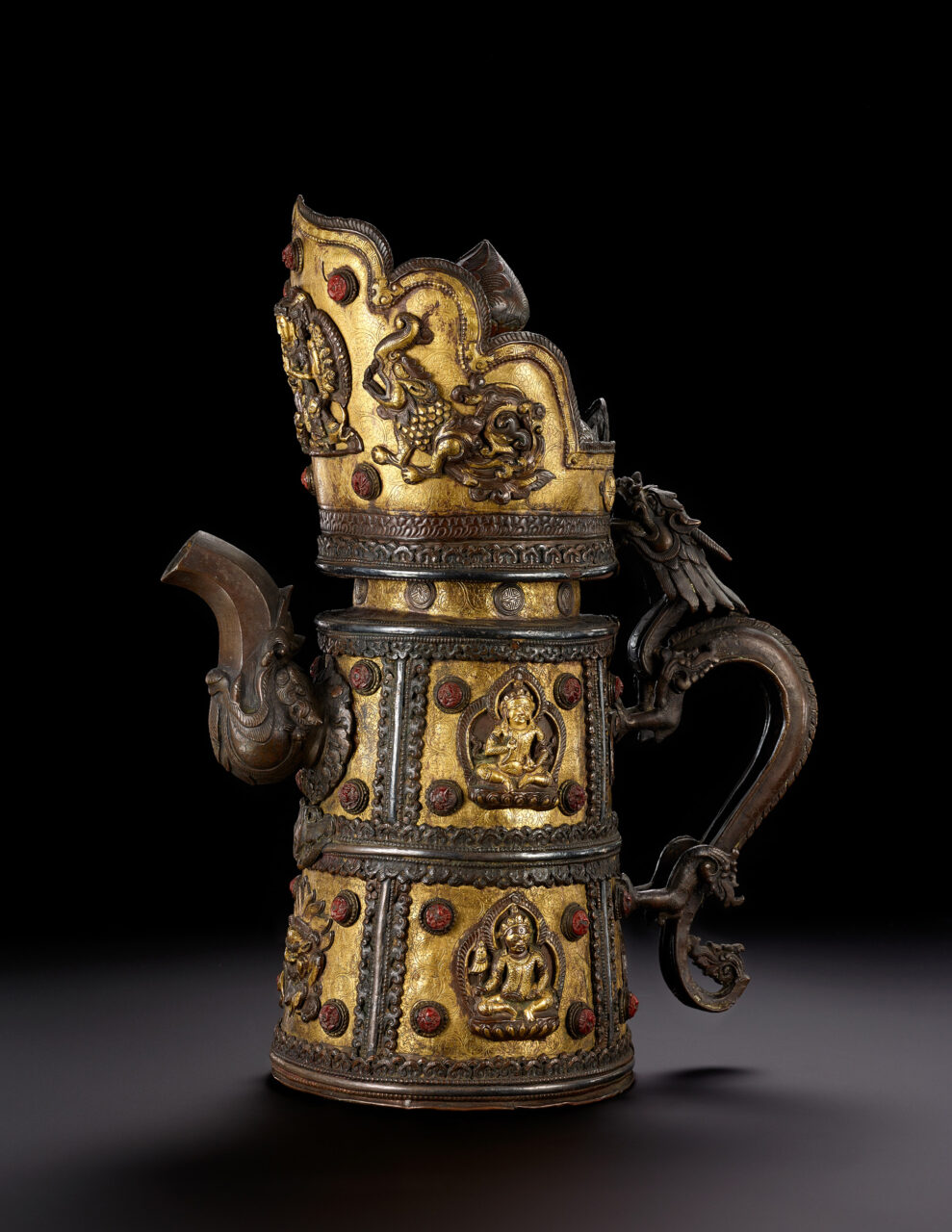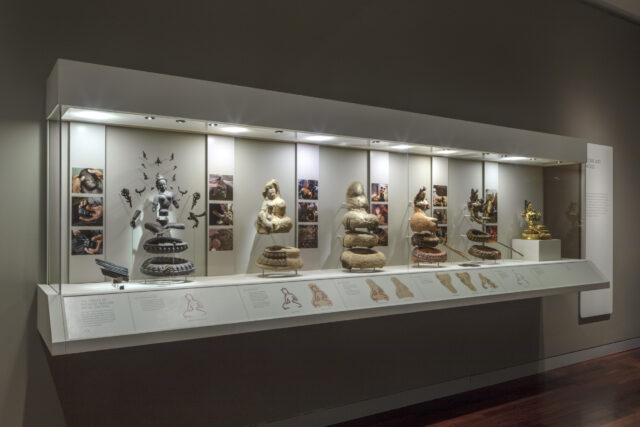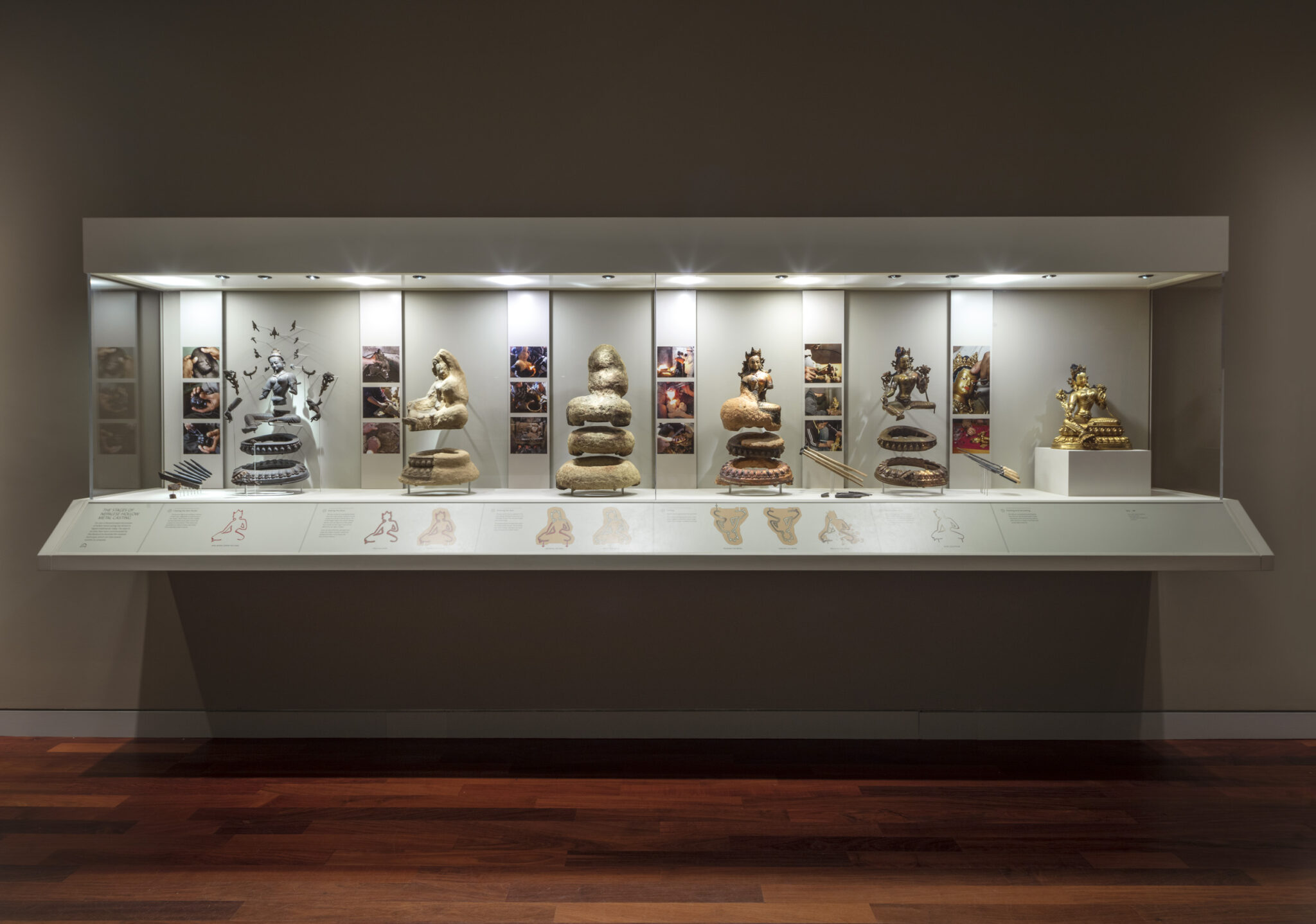
Learn about the processes and methods for creating Himalayan art that were developed over centuries, refined through collaborative efforts of patrons and artists, and encompass all known traditional art making media. To make three-dimensional objects, artists sculpt and carve in clay, stone, and wood, cast images in the round, and hammer repoussé reliefs in metal.
Textile artisans produce images using the appliqué technique, embroidery, and silk weaving and follow the same rules of proportion as the painters of two-dimensional works. Ordinary people also create objects, such as plaques made from molds using clay, and employ woodblocks to imprint images on cloth or paper to make prayer flags, amulets, and texts. Skilled painters create hanging scrolls called thangka using mineral pigments on prepared cloth or silk canvases.
In this section
in this sectionCasting and Shaping Metal
Objects in the Exhibition
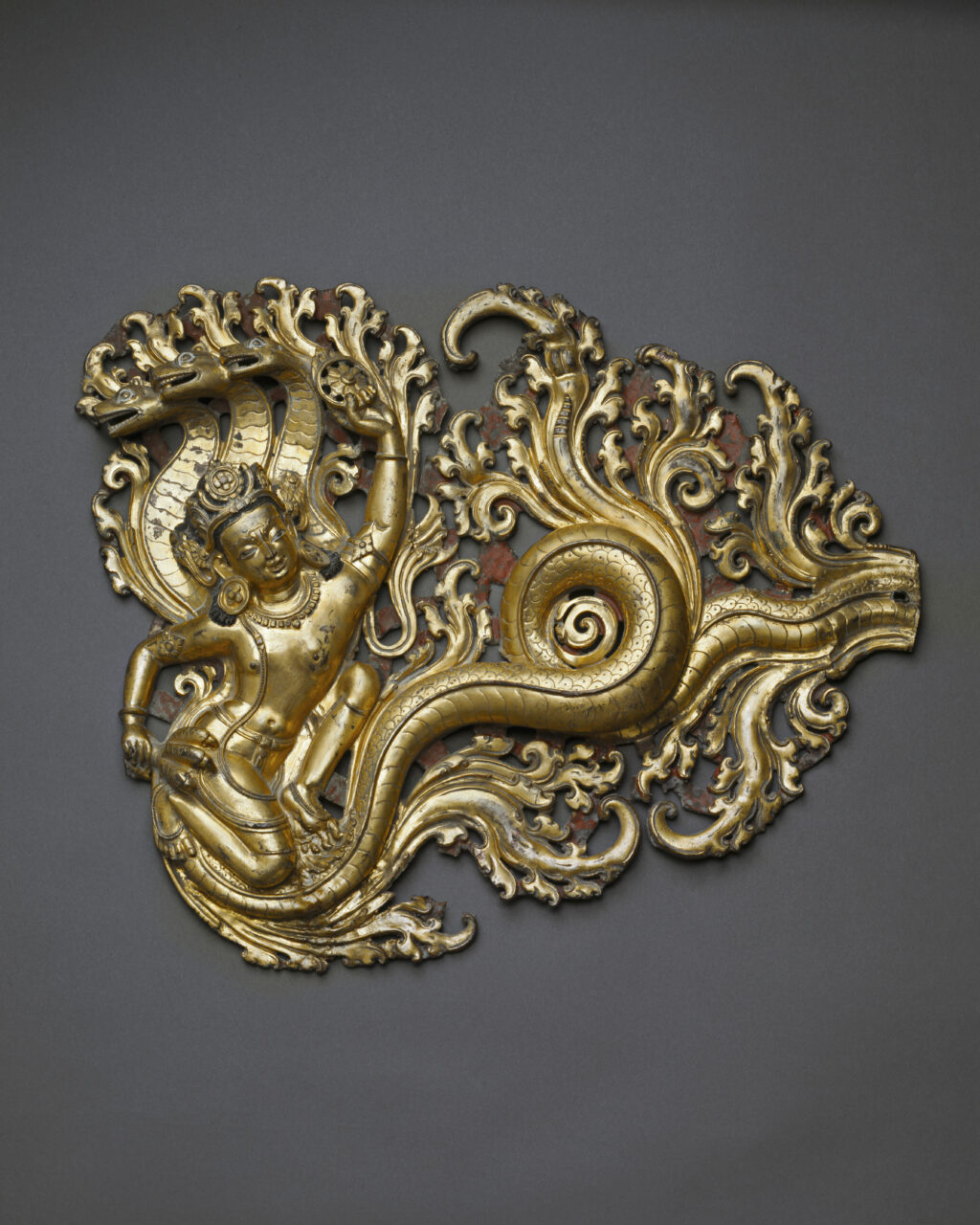
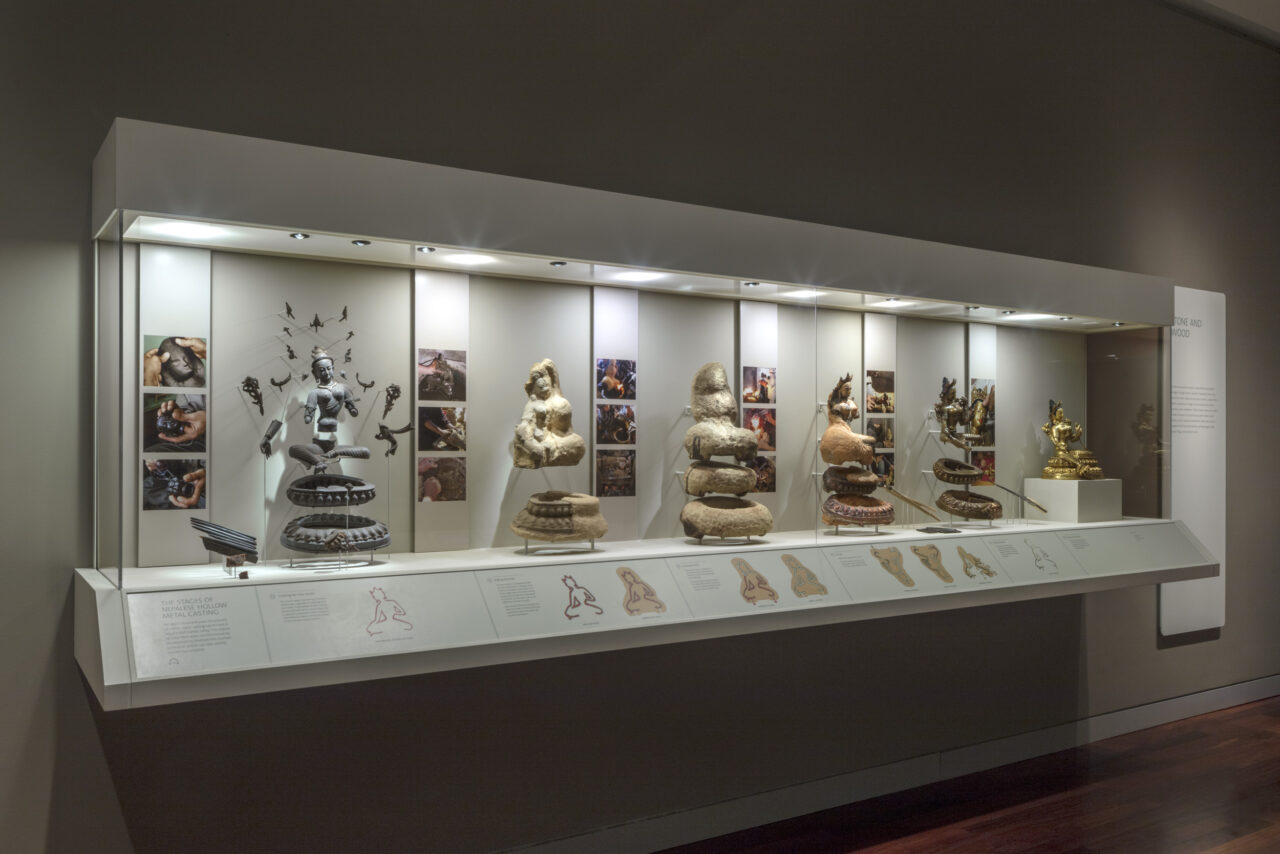
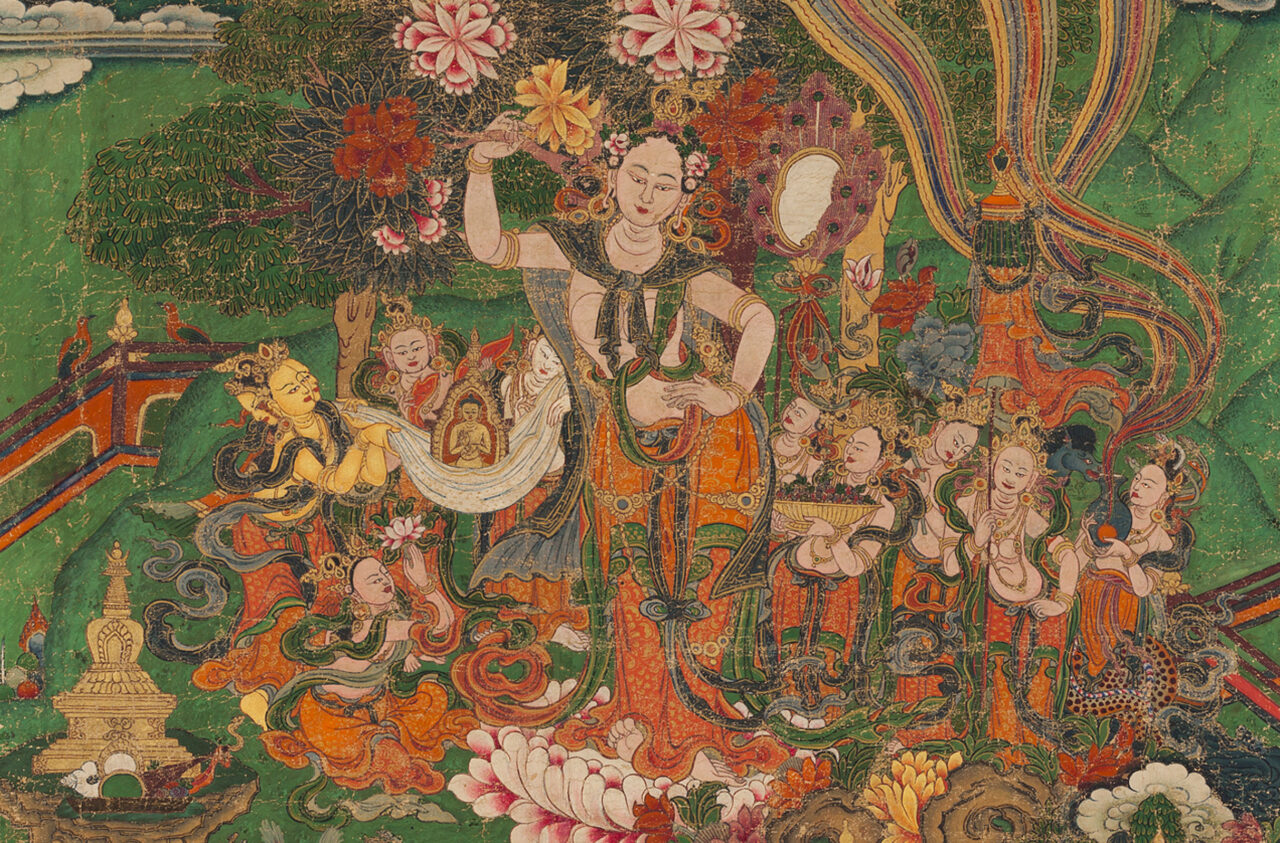
Related:
Lorem ipsum dolor sit amet consectetur adipisicing elit. Cum nihil placeat pariatur deserunt eius ullam incidunt maxime sunt ipsam. Ipsa, provident, laudantium, rem assumenda laboriosam veniam autem voluptas sint officia distinctio enim aut explicabo fuga animi voluptatum earum recusandae excepturi atque dignissimos iste? Exercitationem, praesentium eum. Harum ut maiores expedita exercitationem perspiciatis soluta aperiam dolores natus unde, sequi vitae debitis ex aliquam quas eum reprehenderit esse. Cumque amet et earum necessitatibus, repellendus ullam ducimus corporis architecto culpa placeat eum odit cum iure illo vitae rerum! Ullam et suscipit culpa? Eos voluptatum laudantium iste vero impedit adipisci maxime magni natus voluptatibus.
Sign up for our emails
Get the latest news and stories from the Rubin, plus occasional information on how to support our work.





